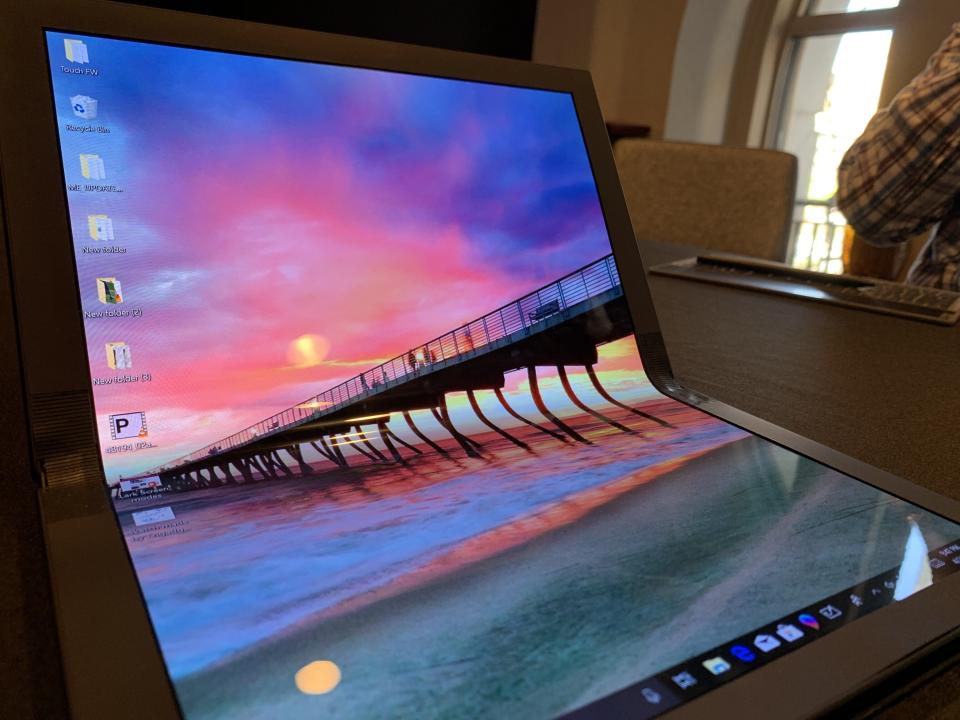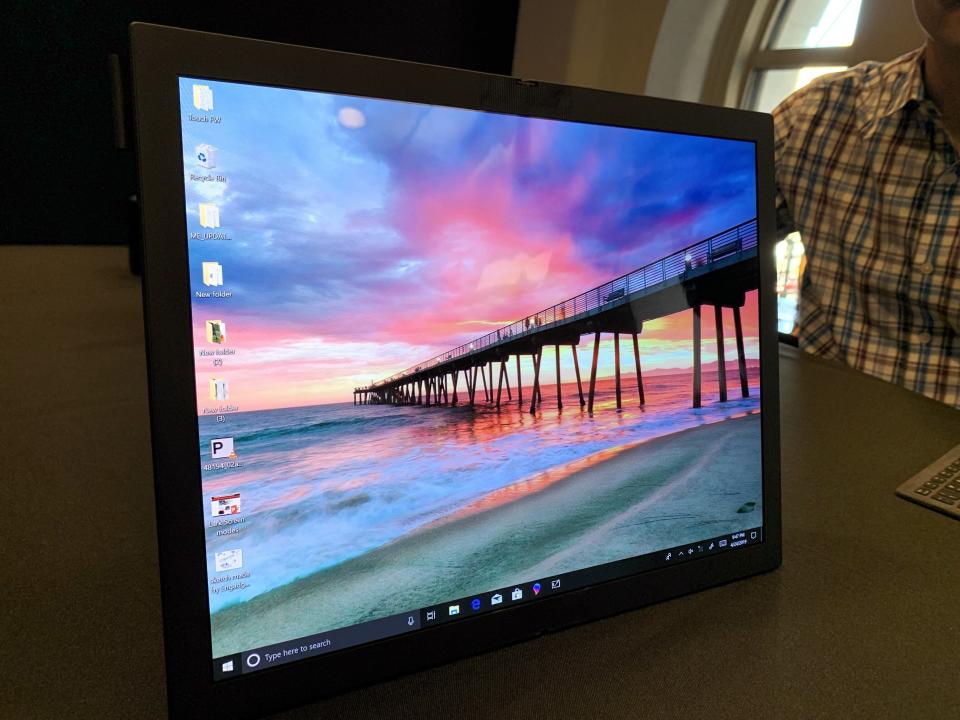Lenovo just unveiled the world's first laptop with a folding screen

PC giant Lenovo has just unveiled the world's first foldable laptop. The device, which is still a prototype and doesn't yet have a firm release date or pricing, will be a part of the company's venerable ThinkPad X1 family of notebooks and feature a foldable 13.3-inch touchscreen display as well as a keyboard attachment.
In development at Lenovo for three years, the X1 prototype can be folded down the middle and held as a book, or laid out flat and used as what is essentially a tablet PC. And while Samsung's Galaxy Fold may have hit a brick wall after early users saw its foldable display crack, Lenovo's offering proves that foldable devices are still the future of personal computing.
With a smaller overall footprint when folded, increased functionality, and a sleek look, foldable devices are sure to capture consumers’ attention.
It bends, it folds!
The X1 prototype is an impressive device to behold. Like the Galaxy Fold, the screen folds in on itself like a book. But whereas the crease where the Fold bent was fairly visible, the Lenovo PC's crease is more difficult to make out. It's still there when you look at the screen at the right angle, but it doesn't stand out quite as much.
The version of the X1 prototype I used was very much an early stage product, and as such I wasn't able to do much with it outside of see that it was running some version of Windows 10, as well as fold and unfold the display. I was also unable to look at the hinge mechanism, as that's still being finalized by Lenovo.
Impressively, Lenovo says that the hinge and display, which is designed by LG Display (LPL), will be able to withstand more open and close cycles than a standard Lenovo laptop. That should mean you'll get plenty of use out of the hinge, since breaking apart a laptop's hinge is pretty tough to do. That said, I'm hoping Lenovo can provide a definitive number to help give consumers an idea as to how long they can expect to have their device.

Bending the display felt smooth, offered a good amount of resistance and could be stopped at any angle. Lenovo attributes this to the use of a torque hinge, which is the same kind of hinge found in a notebook. When I used the Galaxy Fold, I was able to easily flip its display open and slap it shut, but that could prove more difficult given the Lenovo device's larger size. It would be like slamming a text book closed, and I'm fairly sure that would be bad for the screen.
As far as the visual qualities of the display, the X1 prototype is packing an absolute beauty. The OLED panel really makes colors pop. And given the fact that the Lenovo device is essentially just a large foldable screen, it will be especially useful when watching Netflix (NFLX) in bed or on a plane. A built-in kickstand should also make the X1 prototype a standout content viewing machine.
Going with the fold
There are a number of different ways to use Lenovo's new device. The first is by opening the display all the way and using it as a straight-up tablet. Bend the display at a 90-degree angle, and you can use the X1 prototype like a clamshell laptop with content displayed on the top part of the screen and an on-screen keyboard on the lower part. The system's battery is sectioned off in one side of the fold, which serves as its base in this mode. That ensures that it doesn't tip forward when you use it on your lap.
You can also put a physical keyboard on top of the onscreen keyboard if you're going to be typing for a while. Stand up the prototype with its kickstand, and you can take advantage of the 13.3-inch display while using a wireless keyboard for input.

While using the X1 in this mode, you can connect a secondary monitor to one of its 2 USB C ports to really get the most out of the system. Lenovo says it purposely put the 2 ports on the left and bottom edges of the device to ensure that users can access them no matter what mode you're using the system in.
Lenovo has also made the device compatible with the company's own stylus, so you're able to write directly on the display. And since the tablet uses a special polymer instead of glass as its top coating, writing feels far more natural.
Inside, Lenovo says the system will run on a future Intel processing platform that will be optimized for a foldable machine. Unfortunately, there's not much other information available on how we can expect the X1 prototype to perform in terms of speed or battery life. Lenovo, though, says that the device is meant to act as a full-fledged laptop, so there's hope that this might have the kind of power found in a quality convertible tablet-laptop system like the Microsoft (MSFT) Surface.
Lenovo is pegging the date for the X1 prototype's release as sometime next year. I can't wait to see how the system stacks up.
More from Dan:
Google is bringing big changes to the next version of Android
Google’s Pixel 3 XL is half the price of an iPhone and nearly as good
Email Daniel Howley at [email protected]; follow him on Twitter at@DanielHowley. Follow Yahoo Finance on Facebook, Twitter, Instagram, andLinkedIn.www.cerveza-artesanal.com/
